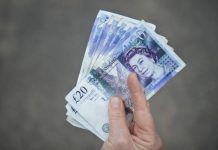The US dollar was bid on Tuesday thanks to a rapid selloff in the Japanese yen, after the Bank of Japan (BoJ) announced mini policy loosening steps that didn’t find buyers. Loosening the upper limit on the 10-year JGB yield in the context of a YCC policy is not enough when considering that the BoJ should drop it altogether and for good.
But on the contrary, not only that the BoJ is not giving up on its YCC policy, but is on track to match its record annual bond purchases. Almost all the Japanese 10-year bonds are held by the BoJ – which in my opinion will become illegal one day – and the BoJ hasn’t yet moved an inch towards normalization of its rate policy whereas the major central bank rate hikes start plateauing after more than a 1.5 year of aggressive rate hikes. So, no wonder the yen got smashed yesterday. The USDJPY spiked past 151, even though the uptick in the US – Japan 10-year yield spread – which also ticked up because of a jump in the Japanese 10-year yield, didn’t attract the yen longs. The only thing that holds traders back from more aggressive selling is the fear of a direct FX intervention. If that happens, there is a good reason to buy a dip.
Zooming out of Japan, the US dollar index consolidated a touch below last month peak. The US consumer confidence index dropped to a 5-month low, but the latest wages data continued to give signs of strength. Yes strength – I am sorry. The employment cost index, a top-notch gauge of what employers spend on compensation, rose 1.1% in Q3 – slightly higher than a quarter earlier. Wages and salaries rose 4.6% – above the US headline CPI, and well above 3% as before the pandemic. And that was before the UAW reached a jaw-dropping deal with Detroit’s 3 carmakers where they nailed a 25% increase in wages and around 150% increase in compensations for the low-paid tier of temporary workers. The ADP data is expected reveal around 150K new private job additions in October, and JOLTS data is expected to show a drop in job openings. On Friday, we will have a look at the official figures. The latter won’t impact the Federal Reserve (Fed) expectations for this week’s policy decision. But any further strength in US jobs data will reinforce a potentially hawkish stance from the Fed policymakers this week.
The Fed
We know that the Fed is not done hiking the interest rates. We know that Jerome Powell won’t call the end of the policy tightening after seeing a blowout growth data – which showed that the US GDP grew almost 5% in Q3 (that’s more than China!), and inflation ticked higher because Americans kept spending. Duh! And if people kept spending their savings it was because they didn’t necessarily feel threatened to lose their jobs, or remain jobless for long. So yes, the jobs market strength is playing tricks on the Fed, and it’s clearly not loose enough. The chances are that we won’t hear anything soothingly dovish. ‘The higher yields help us do the job’ is the best it will get.
You know where growth is not strong?
China is not doing brilliant and this week’s economic data in China showed that the Chinese factory sector slipped back into contraction and the Eurozone economies announced gloomy GDP updates, as well. The German economy contracted in Q3, the French and Italian economies stagnated, the overall Eurozone growth fell 0.1% on a quarterly basis.
But at least, inflation slowed. As a result of soft growth and inflation data, the EURUSD couldn’t extend gains above the 50-DMA and sank below the 1.06 level yesterday. The positive trend is losing momentum, the divergence between the strength of the US economy versus its European counterparts, and the divergence between the Fed and the European Central Bank (ECB) outlooks play in favour of a deeper depreciation in the euro against the greenback.
Crude approaching $80pb crossroads
US crude slipped below its 100-DMA yesterday as buyers became rare on news that Israel’s ground offensive is not as violent as expected. A 1.3mio barrel build in US crude inventories may have helped the bears to push the selloff below the $82pb level. Yet, oil bears will certainly hit a decent support near the $80p level because at this level, they know that Saudi has their back. And the risks of geopolitical nature remain clearly tilted to the upside. For those who bet that we will see a dip near the $80pb level, it is soon time to roll up the sleeves.
Worst since the pandemic, and yet
The S&P 500 rose on the last day of October but recorded its longest monthly slide since the pandemic. Still, the index kicks off the new month a touch above the major 38.2% retracement which should distinguish between the continuation of last year’s rally, and a slide into the medium-term bearish consolidation zone. The next direction will depend on whether the US yields will consolidate and eventually come lower, or they will continue their journey higher. In the second scenario, we will likely see major US stock indices sink into a bearish trend.











